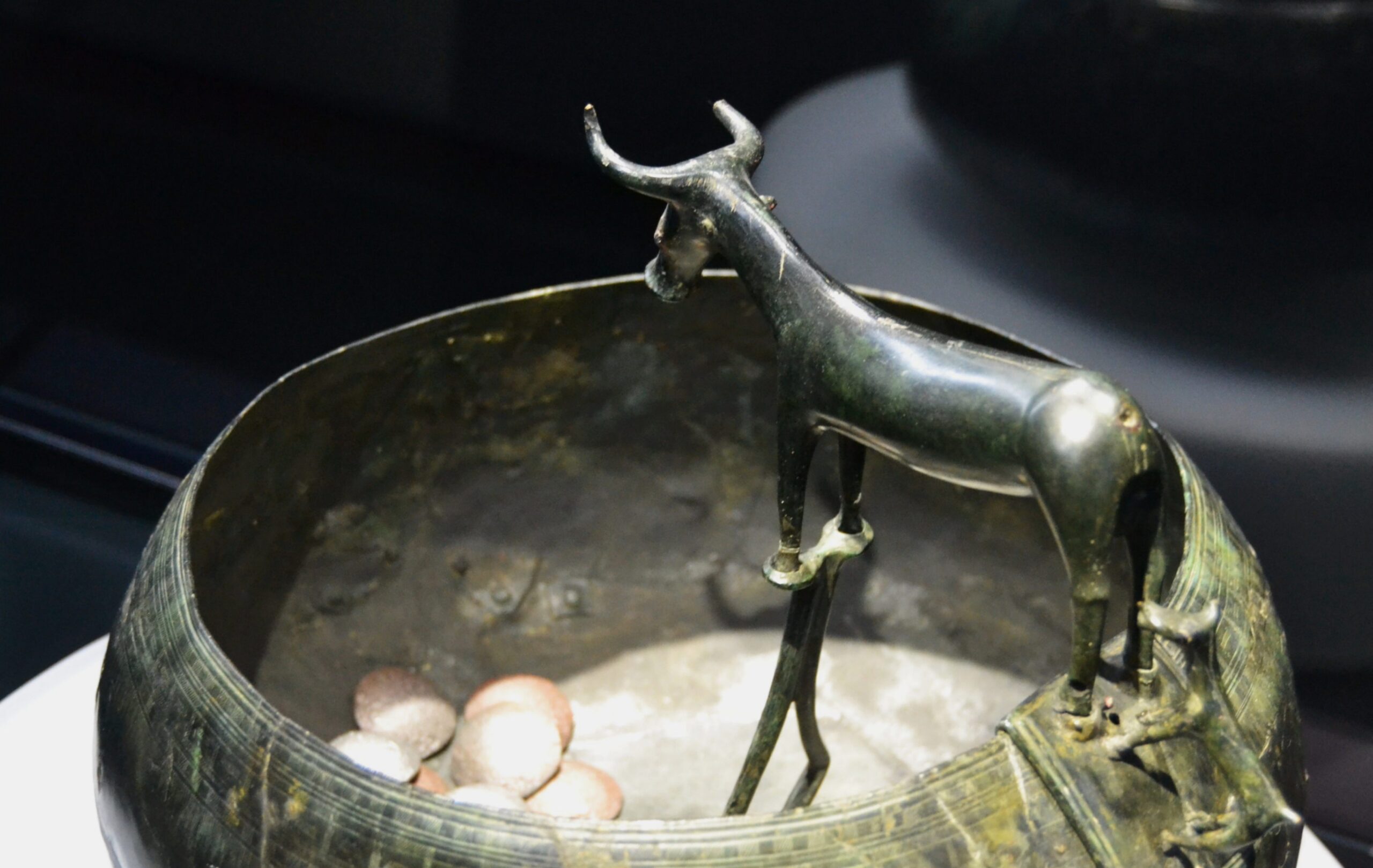In 1906, a remarkable archaeological discovery was made at Tell Basta in Egypt: a magnificent vase with a handle in the form of a goat. Crafted during the reign of Rameses II, who ruled from 1279 to 1212 BC, this artifact is a testament to the artistic prowess and opulence of ancient Egyptian civilization.

The vase, made of gold and silver, showcases the exquisite craftsmanship and attention to detail of the artisans of the time. Its intricate design depicts a goat with its head held high, captured in a lifelike pose. The handle of the vase, in the shape of the goat’s body and horns, adds a touch of elegance to the piece.
The discovery of this vase provides valuable insights into the artistry and symbolism of ancient Egyptian culture. Goats held significant meaning in Egyptian mythology, often associated with fertility and abundance. As such, this vase may have been used in religious ceremonies or as a luxurious offering to the gods.

Moreover, the use of gold and silver underscores the wealth and status of the individual for whom the vase was created. These precious metals were highly prized in ancient Egypt and reserved for the elite and royalty. The vase serves as a testament to the lavish lifestyles enjoyed by the ruling class during the reign of Rameses II.

Since its discovery, the vase with the goat handle has been studied by experts to unravel its historical context and significance. It provides a glimpse into the artistic techniques and materials used during the New Kingdom period of ancient Egypt.

The artifact is now housed in a museum, where it continues to captivate visitors with its beauty and historical importance. It serves as a reminder of the rich cultural heritage and artistic legacy of ancient Egypt, allowing us to appreciate the ingenuity and creativity of our ancestors.
The vase with the goat handle stands as a testament to the enduring allure of ancient Egypt and its ability to intrigue and inspire us even thousands of years later. Its discovery and preservation offer a valuable link to the past, allowing us to connect with the great civilizations that came before us.